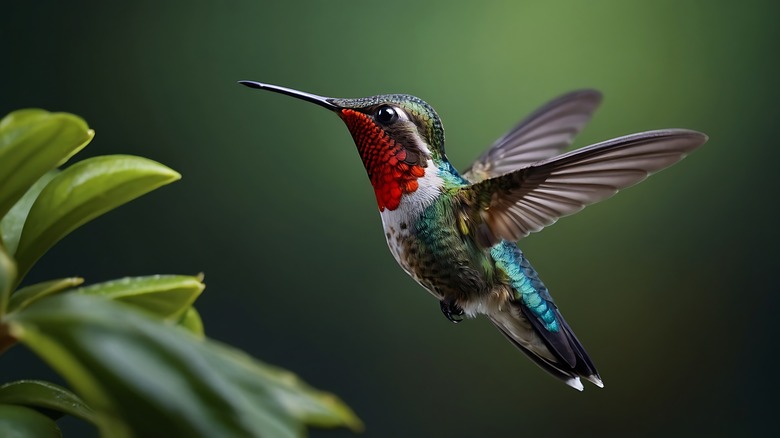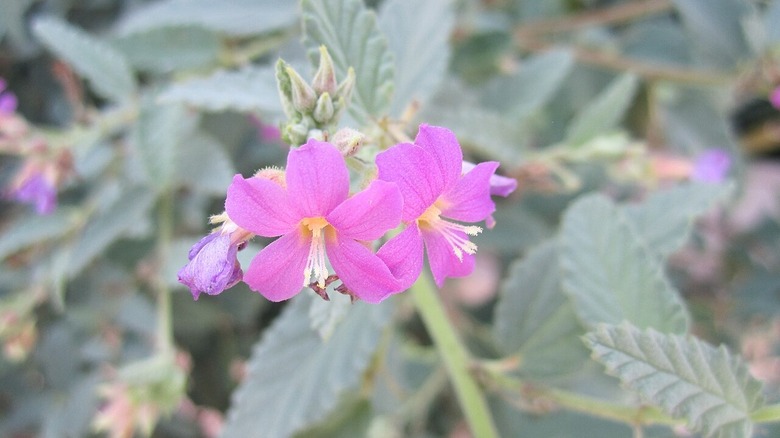The Fuzzy Pollinator Magnet Shrub That'll Tempt Hummingbirds To Your Backyard
If you're truly passionate and excited about adding diversity to your bee-friendly yard, or you're exploring clever ways on how to start a pollinator garden, you might be thrilled to learn that this fuzzy pollinator-magnet shrub will also tempt hummingbirds to pay a visit to your backyard. Grayleaf teabush (Melochia tomentosa) is a native to South Florida and Texas but can be also found in Mexico, Brazil, and the West Indies. It can be grown in USDA hardiness zones 8 through 11 and is appealing to native bees, honeybees, and a number of other pollinators, such as butterflies. Plus, those lively little hummers will adore the nectar-rich flowers of this plant.
This attractive woody plant, which is also commonly referred to as pyramid bush, kidney bush, red rope, or woolly pyramid flower, has gray-green leaves that are soft and fuzzy, and delicate pink to purple flowers from spring through fall. The plant flowers profusely to keep nectar-hungry bugs and birds busy. In fact, they'll be flocking to your garden in droves once they spot those pretty blooms. If not pruned, it can reach a height and width of up to 10 feet, and grows quickly to form a nice open bush. To add even more variety to your landscape, you might also like to explore different fast-growing ground covers that'll attract hummingbirds and pollinators to your yard.
How to grow grayleaf teabush in your garden
This plant is highly adaptable and can be grown in full sun or even part shade. It needs well-drained soil that can be either moist or dry. Once established, this species is quite drought-tolerant which means it doesn't require a lot of extra care when you grow it in your garden. It's also perfect for drier areas that don't receive a lot of annual rainfall. As a bonus, pyramid bush doesn't need a lot of feeding. A low nitrogen fertilizer, such as one with an NPK of 5-10-10 once a year during its active growing season, will be sufficient. But if your soil is fairly loamy and contains organic matter, you won't have to feed it at all.
Grayleaf teabush can be pruned to keep a more compact shape and create fuller growth. Tip pruning is a good idea when the plant is young. After it's put on some good growth, you can give it a trim in early spring or when it has finished flowering. You should also cut out any dead branches or those that have been damaged. Avoid pruning in late spring or summer so that you don't remove any flower buds. After all, you want plenty of blooms on your teabush to attract those little hummers to your garden. Once you have Melochia tomentosa growing happily in your landscape, you might like to surround it with other perennial plants that will fill your yard with hummingbirds.
[Image by TDogg310 via Wikimedia Commons | Cropped and scaled | CC BY-SA 3.0]

